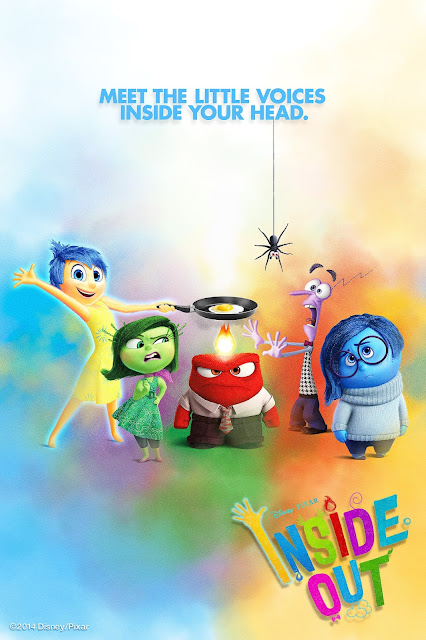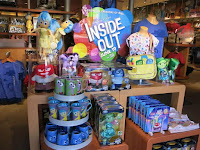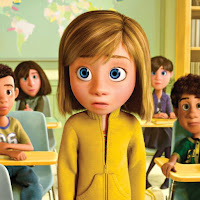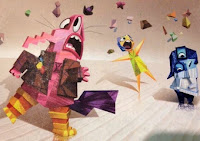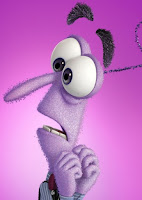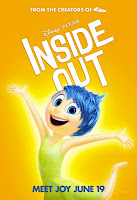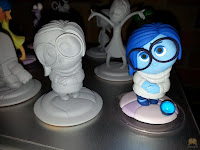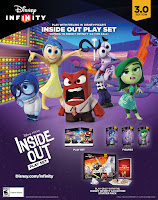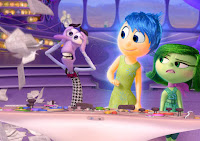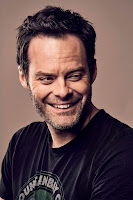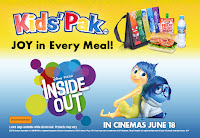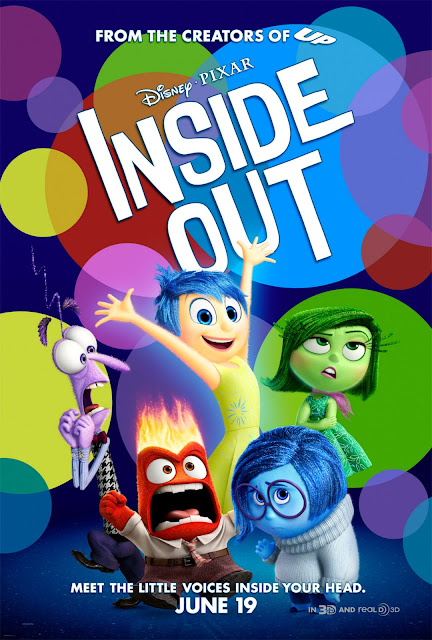Hi folks! Welcome to my My Own Personal Nerdy Disney and Animation Scrutinizing Analysis blog. A blog where I'm analyzing several Disney films, Disney or Animation in general! These entries are just meant to be my analyses. Not reviews or statements. Just fun analyses! Though I'll make some personal remarks now and then, the content of these entries are meant to be depicted objectively. They're made for entertainment purpose only and the pictures/clips are copyright Disney or other companies.
Make sure to leave a comment if you like this site! And if there's something you think could be improved, please let me know. But in a constructive way, please. And just a note; I'm not a Native English writer, so my incorrect grammar may be notable.
And finally; If you haven't seen the films, beware of spoilers! And the funny lines aren't meant to be nothing than funny. So I hope you won't find them offensive. If so, I apologize
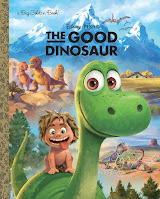 |
| Dinosaurs are our horses in our world :) |
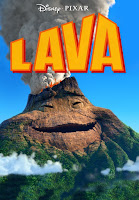 |
| I love to spit fire, so that´s why I´m grinning :) |
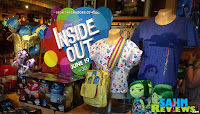 The pressure on Inside Out was tremendous. Accompanied by the short film Lava, it happened to be Pixar´s first original movie in three
years. It was the follower to 2013`s Monsters University. It was originally going to be released in 2014, but it was postponed. So it meant that 2014 became the first year since 2005 to not receive any release. As The Good Dinosaur was going to fill that spot, but was delayed due to story problems. So 2015 became a remarkable year with two Pixar releases, but also suffered a similar Deja Vu fate as Disney did in 2002 with Lilo & Stitch and Treasure Planet. As one movie turned out to be a huge hit and the other a huge flop. But it´s brief critical comeback makes Inside Out unique in
that aspect. While none of the following features were outright flops, Pixar was still in a time where it was all about sequels and still hadn´t truly restored themselves from their dud-staple. Inside Out was first announced in August 2011 at the D23 Expo. Yet it was in the following December that Bleeding Cool reported the title of the film.
The pressure on Inside Out was tremendous. Accompanied by the short film Lava, it happened to be Pixar´s first original movie in three
years. It was the follower to 2013`s Monsters University. It was originally going to be released in 2014, but it was postponed. So it meant that 2014 became the first year since 2005 to not receive any release. As The Good Dinosaur was going to fill that spot, but was delayed due to story problems. So 2015 became a remarkable year with two Pixar releases, but also suffered a similar Deja Vu fate as Disney did in 2002 with Lilo & Stitch and Treasure Planet. As one movie turned out to be a huge hit and the other a huge flop. But it´s brief critical comeback makes Inside Out unique in
that aspect. While none of the following features were outright flops, Pixar was still in a time where it was all about sequels and still hadn´t truly restored themselves from their dud-staple. Inside Out was first announced in August 2011 at the D23 Expo. Yet it was in the following December that Bleeding Cool reported the title of the film.
The Pixar Trademarks, Origins of The Premise, Research, Marketing of Inside Out and The First Non-Steve Jobs Picture
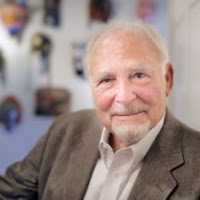
 Pixar
has usually been stuck with a staple of depicting worlds from an alternative points of views. Which is pretty evident on Inside Out. But no
matter how you perceive it, a film about emotions, psychology and mind is truly something interesting. And certainly for a childrens movie. But since Pixar have been known to appeal to adults as well, with depth and layers to their films, it wasn´t truly such a huge stretch. But since the project originated
from director Pete Docter from the heart-tugging Up, it was urged to be emotional (while originally it was going to be a comedy). Since we've been in a wave of serious cases of depression this last decade, Inside Out was definitively a right movie at the right time.
Pixar
has usually been stuck with a staple of depicting worlds from an alternative points of views. Which is pretty evident on Inside Out. But no
matter how you perceive it, a film about emotions, psychology and mind is truly something interesting. And certainly for a childrens movie. But since Pixar have been known to appeal to adults as well, with depth and layers to their films, it wasn´t truly such a huge stretch. But since the project originated
from director Pete Docter from the heart-tugging Up, it was urged to be emotional (while originally it was going to be a comedy). Since we've been in a wave of serious cases of depression this last decade, Inside Out was definitively a right movie at the right time.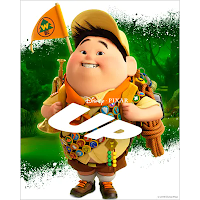 |
| At least I´m standing up, instead of just travelling up :) |
 The idea for Inside Out was taken from Docter´s observations of how his own daughter Elie (who voiced Ellie in Up and are friends with composer Michael Giacchino´s daughter, Gracie) became more quiet and introverted when she turned 11 (which frankly triggered a lot of Pete`s own insecurities and fears). So in true Pixar fashion, it was taken from the directors own personal experiences. Still Docter stated that he didn´t know where the story came from, the
genesis started from the concept of emotions, not the story.
The idea for Inside Out was taken from Docter´s observations of how his own daughter Elie (who voiced Ellie in Up and are friends with composer Michael Giacchino´s daughter, Gracie) became more quiet and introverted when she turned 11 (which frankly triggered a lot of Pete`s own insecurities and fears). So in true Pixar fashion, it was taken from the directors own personal experiences. Still Docter stated that he didn´t know where the story came from, the
genesis started from the concept of emotions, not the story. 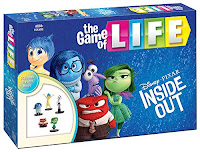 |
| We´re showing our true colors :) |
 |
| This is how the inside of an maniac´s brain looks like :) |
Despite how reserachers have different ideas of how many emotions humans have overall, the process was overall fun for the crew to explore. Ekman had early in his career identified six core emotions; Anger, fear, sadness, disgust, joy, and surprise. Docter found surprise and fear to be too similar, which left him with five emotions to build characters around. Other emotions considered for inclusion during the development process were schadenfreude, ennui, pride and hope. Still the crew were thinking of modelling after Woody Allen´s Everything You Always Wanted to Know About Sex.
 |
| You hatched out of that egg :) |
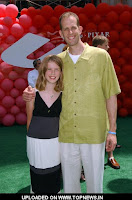 were positive at the proposal of making Inside Out. But they acknowledged that it would be difficult to market. They feared that it would be too cartoony for adults and too intellectual and boring for children (still a test screening for children proved that they could handle the picture). Yet Lasseter at the time stated that “it turned out to be one of the most difficult films the studio ever made". Inside Out was the first Pixar film without input from co-founder and former Apple CEO Steve Jobs. In addition, the film did not have as much input from chief creative officer John Lasseter, who was focused on restructuring Walt Disney Animation Studios in Burbank at the time of its production.
were positive at the proposal of making Inside Out. But they acknowledged that it would be difficult to market. They feared that it would be too cartoony for adults and too intellectual and boring for children (still a test screening for children proved that they could handle the picture). Yet Lasseter at the time stated that “it turned out to be one of the most difficult films the studio ever made". Inside Out was the first Pixar film without input from co-founder and former Apple CEO Steve Jobs. In addition, the film did not have as much input from chief creative officer John Lasseter, who was focused on restructuring Walt Disney Animation Studios in Burbank at the time of its production. How Inside Out Simplifies It`s Premise, The Emotions, The Pixar Layers, Gender of Characters, The Visual Look, The Settings
 |
| Find four wrongs :) |

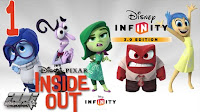 Half of the
story crew were women, in an attempt of diversity. Finding
the look for each emotions was challenging, but the creators wanted to
be invigorating. Originally there were going to be a tons of emotions. All of the main emotions were designed to their simple
shapes and colors. Which is why Joy is somewhat yellow, while Anger is
red and Fear is basically a stick with eyes (producer Jonas Rivera´s kids liked Anger the most). Disgust
was the most difficult character to design. Yet there was a struggle about how she was going to simply look disgusting or simply just be disgusted. Her scarf was a deliberate
choice, as a symbol for her not wanting to throw up.
Half of the
story crew were women, in an attempt of diversity. Finding
the look for each emotions was challenging, but the creators wanted to
be invigorating. Originally there were going to be a tons of emotions. All of the main emotions were designed to their simple
shapes and colors. Which is why Joy is somewhat yellow, while Anger is
red and Fear is basically a stick with eyes (producer Jonas Rivera´s kids liked Anger the most). Disgust
was the most difficult character to design. Yet there was a struggle about how she was going to simply look disgusting or simply just be disgusted. Her scarf was a deliberate
choice, as a symbol for her not wanting to throw up. 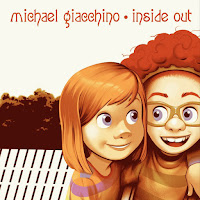 |
| Just wait a few years and we won´t hang like this anymore :) |
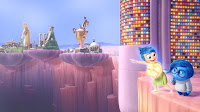 The stylistic
difference between the emotions and the humans was a conscious
choice. The animators were inspired by hand drawn animation, so
there were a lot of hand drawn animators from Disney who came in. As Tony
Fucile (supervising animator on Mufasa from The Lion King and Esmeralda from The Hunchback of Notre Dame) was brought in to
make the look more fluid. The designs were the most cartoony that Pixar had ever done, yet hard to do in three dimensions. Yet the crew managed to have the
characters move in a different way that animated characters had done
before. The
characters were bending a lot more than CGI characters
usually do.
The stylistic
difference between the emotions and the humans was a conscious
choice. The animators were inspired by hand drawn animation, so
there were a lot of hand drawn animators from Disney who came in. As Tony
Fucile (supervising animator on Mufasa from The Lion King and Esmeralda from The Hunchback of Notre Dame) was brought in to
make the look more fluid. The designs were the most cartoony that Pixar had ever done, yet hard to do in three dimensions. Yet the crew managed to have the
characters move in a different way that animated characters had done
before. The
characters were bending a lot more than CGI characters
usually do. 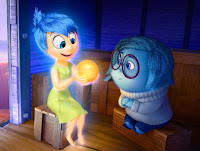 |
| Don´t be fooled, it´s actually hot :) |
 |
| We know how Genie feels in his itty bitty living space :) |
Behind the Scenes Information
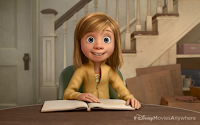 |
| I´m posing for a "do your homework with glee"- commercial :) |
 Inside Out was storyboarded over a period of two to three years. Kevin Nolting, editor of the film, estimated there were seven versions created before it even went to production. Originally it was going to start off as Riley as a 7-year old, yet it was
decided to start her movie off with her birth (which Docter was against at first,
in order of being derivative). One
of the storylines was just centered around Riley buying potato chips
(yes, you´ve read right). And she was going to be unconscious througout
the film and wanted to be part of a turkey pageant on Thanksgiving.
Inside Out was storyboarded over a period of two to three years. Kevin Nolting, editor of the film, estimated there were seven versions created before it even went to production. Originally it was going to start off as Riley as a 7-year old, yet it was
decided to start her movie off with her birth (which Docter was against at first,
in order of being derivative). One
of the storylines was just centered around Riley buying potato chips
(yes, you´ve read right). And she was going to be unconscious througout
the film and wanted to be part of a turkey pageant on Thanksgiving.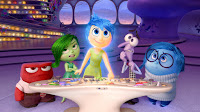 |
| We´re waiting for Santa :) |
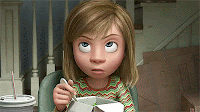 |
| No more hot food for me :) |
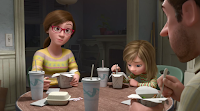 The very first scene that was approved was the dinner scene, three years before the film was done (and was the test for the studio to make sure how the changing between headquarters and the real world would work. And it was such a good scene that the rest of the movie had to live up to that).
The very first scene that was approved was the dinner scene, three years before the film was done (and was the test for the studio to make sure how the changing between headquarters and the real world would work. And it was such a good scene that the rest of the movie had to live up to that).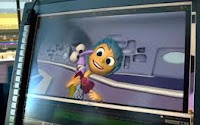 |
| We wanted to take a Topsy Turvy picture :) |
 |
| On set without the luxury ;) |
musicals. To this end, the crew emulated animators Tex Avery and Chuck Jones. In envisaging how the mind's interior would be depicted, the filmmakers concentrated that things should be as energy or energy-based, excitable. Each emotion has a glowing, effervescent quality to them (particularly Joy). Which was difficult to animate as it could be viewed as distracting.
 |
| We´re taking baby steps :) Literally :) Otherwise, she would´ve been like Bambi :) |
 It was a challenge for
It was a challenge for 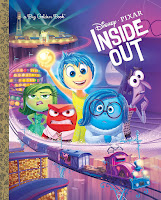 the crew to actually contain all the choices they wanted to work with. Even the camera
movements between the inside and outside world have differed, as
the world inside Riley´s mind was meant to be depicted as perfect and hada
steadier camera. Whereas the real world was meant to be depicted as more flawed and
therefore had steadicam and hand held camera movements. Pete Docter even wrote the TripleDentGum-Song and actually had to sing it to people.
the crew to actually contain all the choices they wanted to work with. Even the camera
movements between the inside and outside world have differed, as
the world inside Riley´s mind was meant to be depicted as perfect and hada
steadier camera. Whereas the real world was meant to be depicted as more flawed and
therefore had steadicam and hand held camera movements. Pete Docter even wrote the TripleDentGum-Song and actually had to sing it to people.
Joy
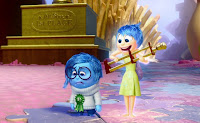
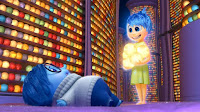 |
| I´m not refusing to help, I´m just going to do situps :) |
 |
| It´s a fun place to play tag :) |
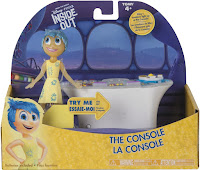 Joy was a challenge to characterize, because she became too annoying in early screenings. Because of that, the Inside Out design
team decided to explore “a lot of
different avenues” of her personality. As being a tomboy, being kind, mischievous, kind of a rascal-type. Yet Amy
Poehler was intuitive regarding the problem with her and nailed the
character. Originally Joy was going to be more hostile. It took nearly 18 months for Docter and his team of six designers to arrive at her final version, taking her from a giddy gamine sketched in black and white. And since Riley is depicted as happy, Joy is the first emotion who comes up.
Joy was a challenge to characterize, because she became too annoying in early screenings. Because of that, the Inside Out design
team decided to explore “a lot of
different avenues” of her personality. As being a tomboy, being kind, mischievous, kind of a rascal-type. Yet Amy
Poehler was intuitive regarding the problem with her and nailed the
character. Originally Joy was going to be more hostile. It took nearly 18 months for Docter and his team of six designers to arrive at her final version, taking her from a giddy gamine sketched in black and white. And since Riley is depicted as happy, Joy is the first emotion who comes up.Originally Joy was going to
 do her journey with
Fear (who was then called Freddie). As
it seemed to be the funniest choice. Finding an arc for
Joy was a challenge, since when she
got back to Headquarters, the crew didn´t know what she was trying to do
(which was a reason for why the story was stopped and haulted at a
screening in 2012). But Docter came to the conclusion of sadness by having a walk through the
woods when he was stressed. Thinking of the people that he´s experienced
sadness with and been pissed off with. After that epiphany, the movie
was rewritten and a new screenwriter was hired. Amy Poehler was also crucial to the rewriting.
do her journey with
Fear (who was then called Freddie). As
it seemed to be the funniest choice. Finding an arc for
Joy was a challenge, since when she
got back to Headquarters, the crew didn´t know what she was trying to do
(which was a reason for why the story was stopped and haulted at a
screening in 2012). But Docter came to the conclusion of sadness by having a walk through the
woods when he was stressed. Thinking of the people that he´s experienced
sadness with and been pissed off with. After that epiphany, the movie
was rewritten and a new screenwriter was hired. Amy Poehler was also crucial to the rewriting. Sadness
As for Joy´s polar opposite, 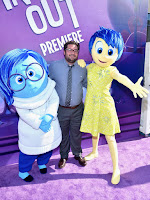 Sadness (voiced by Phyllis Smith, doing her first voice over gig. And was chosen by Rivera while he was watching Bad Teacher), she`s just meant to fill her trait as Joy does. Yet Sadness` (who was originally just called Bud) function is also piviotal because she´s able to show empathy. But what makes it less satisfying (in my opinion) is how Sadness
never has a arc on her own. While Joy learns the necessity of her
polar opposite, Sadness never learns the necessity of her counterpart.
Sadness (voiced by Phyllis Smith, doing her first voice over gig. And was chosen by Rivera while he was watching Bad Teacher), she`s just meant to fill her trait as Joy does. Yet Sadness` (who was originally just called Bud) function is also piviotal because she´s able to show empathy. But what makes it less satisfying (in my opinion) is how Sadness
never has a arc on her own. While Joy learns the necessity of her
polar opposite, Sadness never learns the necessity of her counterpart.
 Sadness (voiced by Phyllis Smith, doing her first voice over gig. And was chosen by Rivera while he was watching Bad Teacher), she`s just meant to fill her trait as Joy does. Yet Sadness` (who was originally just called Bud) function is also piviotal because she´s able to show empathy. But what makes it less satisfying (in my opinion) is how Sadness
never has a arc on her own. While Joy learns the necessity of her
polar opposite, Sadness never learns the necessity of her counterpart.
Sadness (voiced by Phyllis Smith, doing her first voice over gig. And was chosen by Rivera while he was watching Bad Teacher), she`s just meant to fill her trait as Joy does. Yet Sadness` (who was originally just called Bud) function is also piviotal because she´s able to show empathy. But what makes it less satisfying (in my opinion) is how Sadness
never has a arc on her own. While Joy learns the necessity of her
polar opposite, Sadness never learns the necessity of her counterpart. 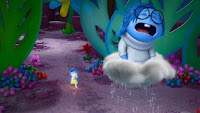 |
| This is how you fly away, Lenny Kravitz :) |
 |
| But I won´t be the star :) Unfortunately :) |
Inside Out`s Theme, Appeal To Adults and Bing Bong
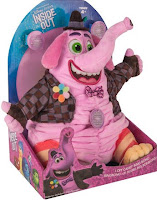 |
| I´m from the Pink Elephant Parade from Dumbo :) |
 |
| We´re posing like starstrucks :) |
between childhood to adulthood. And several reviewers have declared how the content has pretty much mostly appealed to adults the most. Since adults will recognize the transitional lost of childhood. While that is essentially right, it´s still evident that Inside Out still contains one of the most gratingly, juvenile elements ever seen in a Pixar movie, in my opinion.
The character who mostly personifies the transition is Bing Bong (Richard Kind, who had previously starred in A Bug´s Life, the Cars series, and Toy Story 3. And he wanted to portray Bing Bong in the same "sort of innocence" of his previous Pixar roles). Bing Bong was a character that was deliberately hidden from the marketing campaign. Yet his demise is symbol of showing childhood fading away.

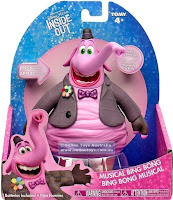 |
| Even an elephant can be a clown :) |
How Inside Out Could`ve Taken It`s Premise Further, Professor Keltner`s Opinions, Reception From Fans and Actors, How Riley is Essentially Just a Prop & Funny Moments
 While a litteral transition between
While a litteral transition between 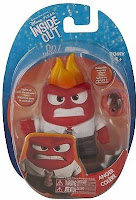 childhood to puberty is certainly nice to see in a childrens movie, perhaps Inside Out could’ve taken Pixar in a different direction and been a darker, more complex story. Since at least it has a premise that could´ve explored it. I´m not trying to imply that Inside Out doesn´t do it´s job and purpose well, but I think it would´ve been nice to see if Pixar took the step further and made it more adult and complex. While there were talks about sending Riley to a deep depression, the crew realized that it wouldn´t been appropriate for their movie.
childhood to puberty is certainly nice to see in a childrens movie, perhaps Inside Out could’ve taken Pixar in a different direction and been a darker, more complex story. Since at least it has a premise that could´ve explored it. I´m not trying to imply that Inside Out doesn´t do it´s job and purpose well, but I think it would´ve been nice to see if Pixar took the step further and made it more adult and complex. While there were talks about sending Riley to a deep depression, the crew realized that it wouldn´t been appropriate for their movie.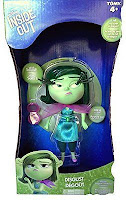
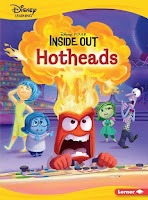 |
| I´m Hades Junior :) |
Keltner received a lot of emails about the movie. Some from Sixty-year-old men who said it changed their relationship to their wives. And from a mom who took her highly functioning autistic boy to the movie, and it was the first time that he got insight into his emotional difficulty.
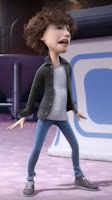
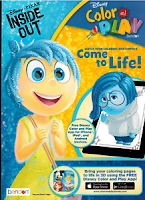 |
| "I´m so excited and just can´t hide it. But I´ve already lost control" ;) |
Trivia
 Inside
Out premiered in Cannes in an out-of-competition screening (just like Up did six years prior). And received a euphoric response from critics. It was the first animated movie to be released in Dolby Vision format in Dolby Cinema and the second for Disney following Tomorrowland.
Inside
Out premiered in Cannes in an out-of-competition screening (just like Up did six years prior). And received a euphoric response from critics. It was the first animated movie to be released in Dolby Vision format in Dolby Cinema and the second for Disney following Tomorrowland.  Michael Giacchino composed the film's score, making his fifth collaboration with Pixar and his second with Docter after Up. Inside Out won the Academy Award for Best Animated Feature and was nominated for the Academy Award for Best Original Screenplay in 2016. The American Film Institute selected Inside Out as one of the Top Ten Films of the Year. The film received the Golden Globe Award for Best Animated Feature Film.
Michael Giacchino composed the film's score, making his fifth collaboration with Pixar and his second with Docter after Up. Inside Out won the Academy Award for Best Animated Feature and was nominated for the Academy Award for Best Original Screenplay in 2016. The American Film Institute selected Inside Out as one of the Top Ten Films of the Year. The film received the Golden Globe Award for Best Animated Feature Film.
Many of the voice actors are several veterans of SNL. Bill Hader (Fear), who´s a Pixar nerd, got his own private tour at Pixar. Who usually don´t give tours. He even got to write a little on the movie (despite how he had previously cameoed in Monsters University. Which speaking of which, the tour of
Riley’s body somewhat recalls the locations of Monsters Inc). Hader even did a temp voice for Sadness. An Inside Out play set featuring all five emotions as playable characters were made available for Disney Infinity 3.0. A mobile game, Inside Out: Thought Bubbles, was released on June 18, 2015, by Disney Mobile Games on Apple App Store and various other services.
Yet Inside Out haven´t escaped
controversy. On June 20, 2017, Denise Daniels, a child psychologist from Minnesota, filed a lawsuit against Disney and Pixar for breach of contract. Daniels had been working on a creative project, The Moodsters, with a theme very similar to Inside Out and had discussed prospects of a TV production with Disney and Pixar executives, including with Docter. However, her suit was dismissed by judge Philip Gutierrez. Who ruled that since Daniels had released materials related to the project publicly at the time.
 |
| At least it´s better than Bubble Shooter :) |
 |
| My head can be the perfect grill :) |
Epilogue
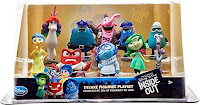 Either
way, Inside Out is a successful and well-made movie
Either
way, Inside Out is a successful and well-made movie that totally proved how Pixar can succeed at what they do best. While it didn´t became the landmark Up was, at least Inside Out had no small shoes to live up to. Docter and co-director Ronnie del Carmen have said how complex it was, yet how much they´ve learned about emotions. When asked for plans for a possible sequel, Pete Docter replied that there was no sequel idea from him at this point. But also adding "Never say never."
 |
| It`s our way of posing tough :) |
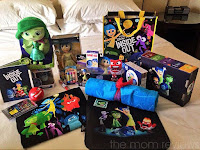 Pixar president Jim Morris said that while demand for a sequel is high, the company has committed its resources to several original movie concepts from June 7, 2019. And that there wouldn`t be any sequels to Pixar's other films. Regardless of how the premise lends to a sequel, Inside Out is an evidence of how a truly intriguing premise a company dares to execute in a animated film. And it´s a good movie on it´s own right. While it may have a couple of shortcomings, it still rank among Pixar´s very best movies. So Happy Fifth Anniversary, Inside Out and may you continue to have many more.
Pixar president Jim Morris said that while demand for a sequel is high, the company has committed its resources to several original movie concepts from June 7, 2019. And that there wouldn`t be any sequels to Pixar's other films. Regardless of how the premise lends to a sequel, Inside Out is an evidence of how a truly intriguing premise a company dares to execute in a animated film. And it´s a good movie on it´s own right. While it may have a couple of shortcomings, it still rank among Pixar´s very best movies. So Happy Fifth Anniversary, Inside Out and may you continue to have many more.Head to my updates on https://www.facebook.com/profile.php?id=100035703494050 and https://twitter.com/NerdyLunada.
References:
Inisde Out Blu Ray
https://www.boxofficemojo.com/title/tt2096673/?ref_=bo_se_r_1
https://www.rottentomatoes.com/m/inside_out_2015
https://en.wikipedia.org/wiki/Inside_Out_(2015_film)
https://www.dvdizzy.com/forum/viewtopic.php?f=1&t=28836&hilit=Inside+Out
http://filmmusicreporter.com/2014/05/25/michael-giacchino-to-score-pixars-inside-out/
https://variety.com/2015/film/news/box-office-inside-out-wont-stop-jurassic-world-rampage-1201522202/
https://psmag.com/social-justice/a-conversation-with-psychologist-behind-inside-out
https://www.nytimes.com/2015/07/05/opinion/sunday/the-science-of-inside-out.html
https://ew.com/article/2015/06/21/box-office-report-inside-out/
https://ew.com/article/2015/06/19/inside-out-pete-docter-joy/
http://www.wdsmediafile.com/media/InsideOut/writen-material/InsideOut555ce8f2b678a.pdf
https://www.forbes.com/sites/scottmendelson/2015/02/01/pixars-inside-out-puppy-bowl-ad-plays-your-emotions/#73a0e8905a20
https://www.nytimes.com/2015/05/24/movies/inside-out-pixars-new-movie-from-pete-docter-goes-inside-the-mind.html
https://web.archive.org/web/20150616232629/http://blogs.indiewire.com/thompsononhollywood/why-pete-docters-inside-out-was-so-tough-to-make-into-must-see-pixar-20150525
